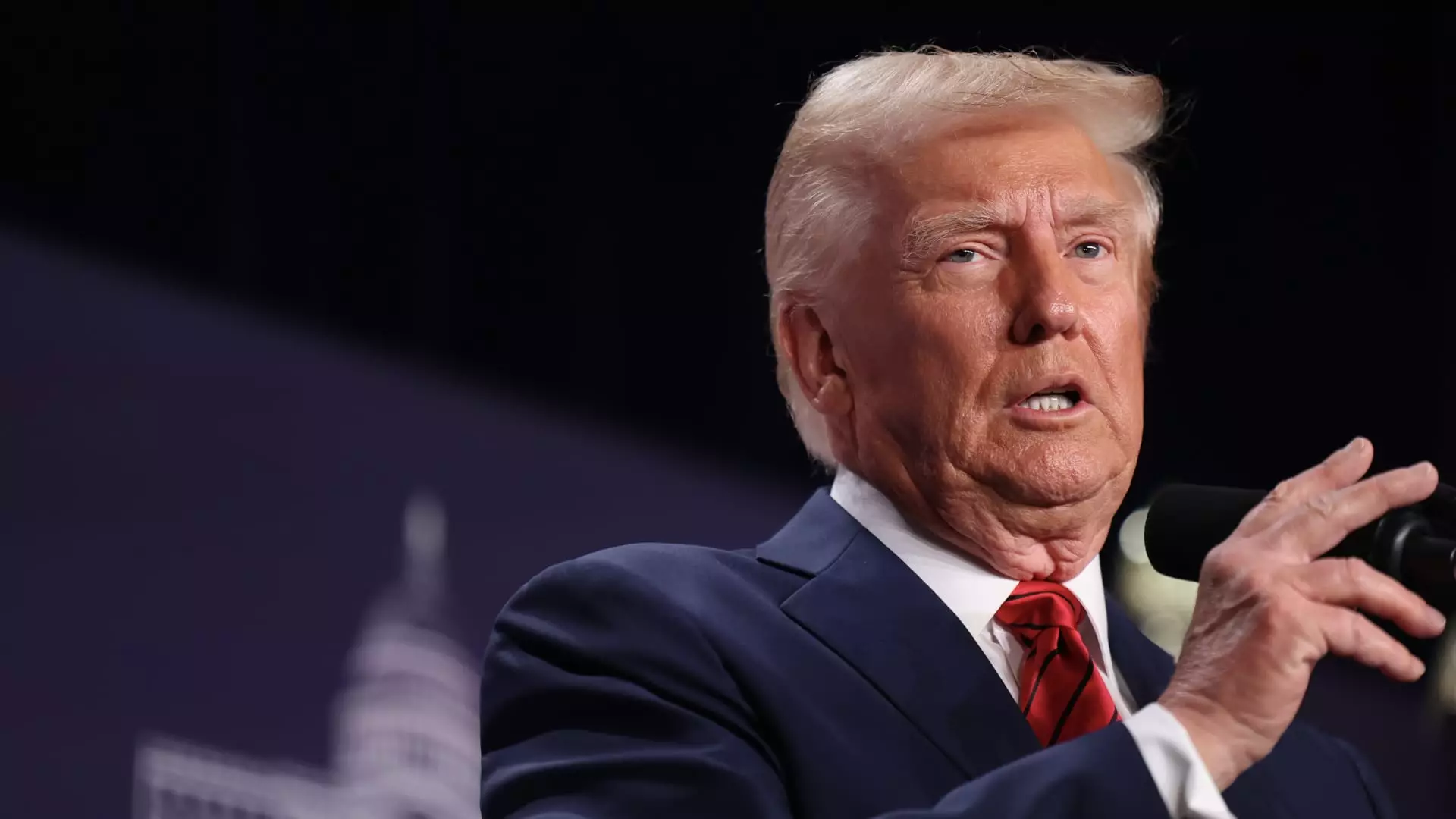In a climate marked by fluctuating international trade relationships, the announcement of impending tariffs by President Donald Trump has triggered widespread debate across the economic landscape. Targeting key trading partners such as Canada, Mexico, and China, the proposed tariffs—25% on goods from the former two countries and a 10% levy on the latter—are set to take effect on February 1. As the administration prepares to impose what many economists deem detrimental taxes on foreign imports, a closer examination reveals that American consumers may face significant financial repercussions as a direct result of this policy shift.
Those well-versed in economic principles have warned against the broad application of tariffs. Mary Lovely, a distinguished scholar at the Peterson Institute for International Economics, encapsulates the sentiment by asserting that it is challenging to identify any positive outcomes from imposing taxes on imported goods. The impending tariffs target three of the United States’ largest trading partners, which, in 2022, collectively contributed close to $1.43 trillion in goods. This reliance on imported goods renders tariffs not just a political maneuver but a potential economic minefield for consumers.
Tariffs function as a tax levied on imports, which businesses are required to pay to the federal government. This fiscal responsibility is unlikely to remain absorbed by the producers; instead, businesses are expected to translate these new costs into higher prices for consumers at the register. As Lovely aptly points out, part of the additional financial burden introduced by these tariffs will be pushed onto the consumer. This cost-passing mechanism raises important questions about what choices will be available to average Americans, who may find store shelves less stocked with familiar brands and products.
Despite the chaotic landscape of tariff implementation, particular nuances may help mitigate some adverse effects. Speculation regarding potential exemptions, like Canadian oil, presents a glimmer of hope for consumers. However, these exemptions can also lead to confusion and inconsistency in an already turbulent market where predictability is paramount for businesses and consumers alike.
The implications of these tariffs extend far beyond immediate price increases. The White House anticipates a long-term boost for the U.S. economy, drawing on historical context with previously imposed tariffs during Trump’s first term. However, divergent assessments paint a starkly different picture. Research from economists at the Peterson Institute suggests that, should these tariffs be fully realized, a significant-scale reduction in GDP is likely—a $55 billion contraction within the Trump administration’s second term directly tied to the additional 10% tariff on China alone.
As consumers brace for a potentially harsh economic impact, the parallels between this instance and previous tariff campaigns raise essential questions regarding strategy and efficacy. For example, Trump’s consideration of a comprehensive tariff—up to 60% on Chinese imports—could lead to average households incurring an additional financial burden estimated at $3,000 annually by 2025, according to analyses.
The ripple effects of tariffs are not limited to mere price hikes; they destabilize existing supply chains and affect the diversity of products available in the U.S. market. Significant categories of consumer goods—including apparel, electronics, and even essential items like food—are heavily sourced from these trading partners. Any upward pressure on prices inevitably translates to broader economic strain, hitting lower and middle-income families the hardest.
Moreover, the agricultural sector may also bear the brunt of newly imposed tariffs. With Canada and Mexico accounting for a substantial percentage of vegetable and prepared food imports, tariffs in this sector could lead to rising food prices, straining budgets and potentially altering dinner tables across the country.
While the administration may tout job creation as a by-product of these tariffs, considerable evidence suggests otherwise. Economists caution that potential job growth in specific sectors could be eclipsed by the broader economic fallout. For example, while steel production jobs might see short-term gains, the collateral damage might result in the elimination of many more jobs in industries relying on steel as a crucial input. Lovely’s analysis posits that there are approximately 80 jobs in industries utilizing steel for every one position created in steel production.
Furthermore, the specter of retaliation looms large, especially with foreign markets, particularly China, possessing a history of responding to tariffs with their own. Such retaliatory measures threaten to ignite a trade war, resulting in further economic deterioration as U.S. companies face restricted access to global markets.
A Path Forward: Caution and Consensus
With the economic reverberations from these tariffs still unclear, economists advise a cautious approach moving forward. Broad-based tariffs may engender more harm than good, fostering a climate rife with unpredictability and financial strain for consumers. Taking into account both the apparent and hidden costs, it becomes evident that the ramifications of such policy decisions will extend well beyond the realm of immediate economic impact, influencing every segment of the American consumer experience in profound ways. In navigating the complexities of international trade, the U.S. must tread carefully, balancing the need for domestic growth with the territorial duty of safeguarding consumer welfare.

